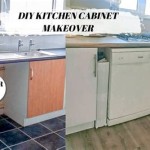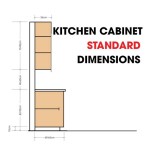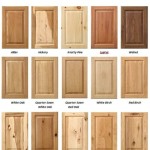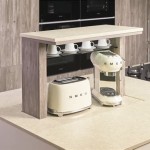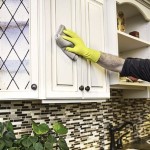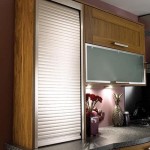Kitchen Cabinet Rolling Shelves: Maximizing Space and Efficiency
Kitchen cabinet rolling shelves, also known as pull-out shelves or slide-out shelves, are a popular storage solution designed to enhance accessibility and organization within kitchen cabinets. They offer a practical alternative to traditional fixed shelving, significantly improving the user experience by bringing items stored deep within cabinets within easy reach. This article will delve into the benefits, materials, installation, and considerations associated with kitchen cabinet rolling shelves.
The primary function of rolling shelves is to address the inherent limitations of standard kitchen cabinets. Traditional cabinets often feature fixed shelves that create deep, dark recesses, making it challenging to locate and retrieve items at the back. This can lead to wasted space, duplicated purchases due to forgotten inventory, and general frustration during meal preparation. Rolling shelves effectively eliminate these problems by allowing users to effortlessly extend the entire shelf contents outward, providing a clear and unobstructed view of all stored items.
Rolling shelves are not limited to kitchens, though this is their most common application. They can also be used in pantries, bathrooms, laundry rooms, and even garages to optimize storage and accessibility. The versatility of these shelves makes them a valuable addition to any space where efficient organization is desired.
Benefits of Installing Rolling Shelves
The advantages of installing rolling shelves in kitchen cabinets are numerous, contributing to a more organized and efficient kitchen environment. Aside from the improved accessibility that is intrinsic to the design, other notable benefits exist.
Firstly, rolling shelves increase storage capacity. While they don't physically expand the cabinet's dimensions, they enable users to utilize the full depth of the cabinet. Items that would otherwise be relegated to the back and potentially forgotten become readily accessible, encouraging efficient stocking and reducing food waste. This maximization of existing cabinet space can negate the need for additional storage solutions, potentially saving money and space in the long run.
Secondly, rolling shelves greatly improve organization. Different types of items can be grouped together on individual shelves, creating a more structured and manageable storage system. This facilitates quick location of ingredients, cookware, and other kitchen essentials. Customization options, such as adjustable dividers and tiered shelves, further enhance organizational possibilities, catering to specific storage needs and preferences.
Thirdly, rolling shelves enhance accessibility, increasing convenience for users of all ages and abilities. Reaching deep into cabinets, especially lower cabinets, can be challenging for individuals with limited mobility or back problems. Rolling shelves eliminate the need for awkward bending and stretching, making it easier to retrieve items without strain. This contributes to a safer and more comfortable kitchen experience. Seniors and individuals with disabilities can particularly benefit from this feature, promoting independent living and reducing the risk of injury.
Finally, cleaning becomes significantly easier with pull-out shelves. Spills and messes are common in kitchens, and cleaning the back of a deep, fixed shelf can be difficult and require awkward maneuvers. Rolling shelves allow for easy access to the entire shelf surface, simplifying cleaning and preventing the buildup of dirt and grime. This contributes to a more hygienic kitchen environment.
Materials Used in the Construction of Rolling Shelves
The materials used in the construction of rolling shelves significantly impact their durability, functionality, and aesthetic appeal. Common materials include wood, wire, and various polymers, each offering unique advantages and disadvantages.
Wood is a popular choice for rolling shelves due to its strength, stability, and aesthetic versatility. Solid wood shelves offer a classic and elegant look, but they can be more expensive and susceptible to warping or cracking in humid environments. Plywood is a more affordable and dimensionally stable alternative, often used in conjunction with wood veneer to achieve a similar aesthetic appearance. Options like maple or birch are often used in higher end shelves. These hardwoods offer a durable surface and resist denting and scratching.
Wire shelves are a cost-effective option, providing good ventilation and visibility of stored items. However, they may not be suitable for storing small or irregularly shaped items, as these can easily fall through the gaps. Wire shelves are typically coated with a protective finish, such as epoxy or chrome, to prevent rust and corrosion. They are also less visually appealing than wood shelves, often considered a more utilitarian option.
Polymer shelves, such as those made from durable plastics, offer a lightweight and moisture-resistant alternative. They are easy to clean and maintain, making them a practical choice for kitchens. Polymer shelves are available in a variety of colors and styles, offering design flexibility. While less aesthetically appealing than wood, they are often more affordable and resistant to damage from spills and humidity. Some polymer shelves may not be as strong as wood or wire shelves, so it's important to choose a high-quality product.
The choice of material depends on the specific needs and preferences of the user, as well as the overall style and budget of the kitchen. Factors to consider include the weight capacity of the shelves, their resistance to moisture and stains, and their compatibility with the existing cabinet interiors.
Installation of Kitchen Cabinet Rolling Shelves
The installation of kitchen cabinet rolling shelves can be a straightforward process, particularly for those with basic DIY skills. However, professional installation is recommended for individuals who are not comfortable with basic carpentry tasks or who require custom solutions.
Before beginning the installation, it is crucial to accurately measure the interior dimensions of the cabinet. Measure the width, depth, and height of the opening to ensure that the rolling shelves will fit properly. Account for any obstructions, such as hinges or pipes, that may interfere with the installation. It is also important to consider the thickness of the shelf material and the slide mechanism when calculating the required dimensions.
The installation process typically involves attaching the slide mechanisms to the sides of the cabinet and then mounting the rolling shelf onto the slides. The slides are typically attached with screws, and it is important to use the correct size and type of screws to avoid damaging the cabinet. Ensure the slides are perfectly aligned and level to ensure smooth and consistent operation of the shelf.
For cabinets with adjustable shelves, it may be necessary to remove the existing shelves and install support braces to provide a stable base for the rolling shelves. The support braces can be made from wood or metal and should be securely attached to the cabinet walls. For frameless cabinets, the slides are typically attached directly to the cabinet sides. For face-frame cabinets, the slides may need to be mounted using spacers to compensate for the thickness of the frame.
Depending on the type of rolling shelves, there may be additional steps involved in the installation process. Some shelves may require assembly before installation, while others may come pre-assembled. Always follow the manufacturer's instructions carefully to ensure a proper and safe installation.
Choosing the right type of slides is also a crucial consideration. Ball-bearing slides offer smooth and quiet operation, while friction slides are a more affordable option. Full-extension slides allow the shelf to be pulled out completely, providing maximum access to the contents. Soft-close slides prevent the shelf from slamming shut, protecting stored items and reducing noise. The choice of slides depends on the desired level of performance and the budget.
Finally, after installation, it is essential to test the rolling shelves to ensure that they are functioning properly. Check that the shelves slide smoothly and without any binding or sticking. Verify that they are securely attached to the slides and that they can support the weight of the stored items. Make minor adjustments as necessary to ensure optimal performance.
Rolling shelves are a simple upgrade that greatly improves the usability of kitchen cabinets. They increase storage capacity, improve organization, and enhance accessibility, making them an excellent choice for any kitchen renovation or upgrade project. While the initial investment may seem significant, the long-term benefits of increased efficiency and convenience make rolling shelves a worthwhile addition to any home.

A Designer Trick For Maxing Out Kitchen Cabinet Storage

Homeibro 25 5 In Wood Cabinet Pull Out Drawer With Soft Close Hd 521262 Fdc The Home Depot

Making Smart Use Of Kitchen Cabinet Pull Out Storage

Pull Out Cabinet Shelves Keystone Wood Specialties

Maximize Your Kitchen With These 7 Pull Out Shelf Ideas

Kitchen Pull Out Shelves Sliding Cabinet Slide

Where To Buy Pull Out Cabinet Shelves And Drawers In 2024 The Kitchn

Appliance Garages Pull Out Shelves Help Organize Kitchen Home And Garden Life

Kitchen Pull Out Shelves Sliding Cabinet Slide Diy Storage Cabinets

Kitchen Organization Pull Out Shelves In Pantry Remodelando La Casa
Related Posts

